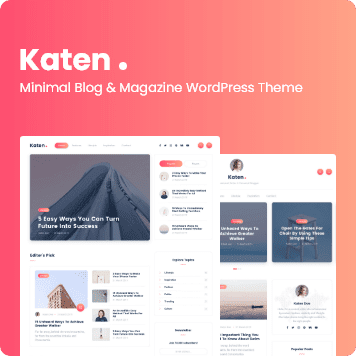Ever feel like you’re drowning in endless tasks but still want your work to mean something bigger? You’re not alone—and that’s exactly the challenge Valerie Guiliani set out to solve. These days, everyone talks about being “efficient,” but what does that really look like if you care about both speed and sustainability? Valerie isn’t just another consultant tossing buzzwords around; she’s hands-on, proven, and laser-focused on making real change stick—especially in fast-moving fields like fashion and beyond.
People keep asking: How do I streamline my life or company while actually helping the planet—not just checking boxes for some annual report? The answer rarely comes easy. That’s where Valerie steps in with a toolkit built on circular economy thinking and practical transformation strategies. If you’ve wondered whether it’s possible to get more done and create positive impact (without burning yourself or your team out), her story offers not only hope but actionable insights.
Let’s dive into what sets Valerie Guiliani apart in a world desperate for modern efficiency—and why her approach is quickly becoming essential knowledge.
Modern Efficiency And Sustainability: The Core Of Valerie Guiliani’s Approach
Imagine trying to overhaul an entire industry notorious for waste—fashion—while convincing people that doing good can be good business too. That’s been much of the mission behind Valerie Guiliani’s career so far.
She doesn’t preach from the sidelines; instead, she rolls up her sleeves as a Sustainability Impact Advisor and Consultant, shaping bold shifts in companies’ day-to-day operations. Why does this matter? Because most traditional approaches treat efficiency as just squeezing costs or speeding up timelines—but rarely connect those dots to lasting environmental gains.
What makes Valerie different is how she threads together these core ideas:
- Sustainable Business Models: Moving past short-term fixes toward systems designed for reuse, longevity, and resourcefulness.
- Circular Economy Integration: It’s not just recycling—it’s reimagining every step so less becomes waste from the start.
- Business Transformation: Focusing on action plans that let businesses grow responsibly instead of cutting corners.
Picture sitting down with someone who knows exactly what keeps executives awake at night—meeting quarterly targets while staying ahead of growing ESG demands. Now add deep knowledge of Environmental, Social, and Governance strategies tailored specifically for sectors with outsized global footprints (like apparel). That mix lets companies skip empty promises for measurable progress.
Here’s where things get interesting: While many consultants skim over specifics (“just do better!”), Valerie digs into data-driven frameworks that show clients precisely how their choices echo across supply chains—and why quick wins won’t cut it anymore.
Sustainability In Action: What Businesses Gain From Embracing Modern Efficiency
| Sustainability Focus Area | Tangible Benefits For Companies |
|---|---|
| Circular Economy Strategies | – Lower long-term operating costs – Reduced exposure to volatile raw material prices – Enhanced brand reputation among eco-conscious consumers |
| ESG Frameworks & Advisory | – Attracting responsible investors – Staying ahead of regulatory changes – Building loyalty through transparent reporting |
| Sustainable Transformation Projects | – Unlocking innovation opportunities – Streamlining production with less waste – Meeting new market expectations faster than competitors |
- If you’re skeptical about switching old habits for new ones, remember this: According to recent industry analysis from leading consultancies (McKinsey & Co., BCG), companies with strong sustainability credentials outperform their peers by nearly double-digit margins over five years.
In other words—a truly efficient strategy doesn’t sacrifice values for results; it uses them as fuel.
Valerie Guiliani’s Sustainability Impact: Why Her Name Resonates in Fashion
Ever wonder why some names just keep popping up when people talk about real change in the fashion world? Valerie Guiliani is one of those rare figures. You hear whispers among eco-conscious designers, see her pop up on podcast panels, and stumble across detailed LinkedIn posts breaking down complex ideas into something anyone can understand.
But why has “Valerie Guiliani” become shorthand for credible sustainability advice—especially in an industry famous for waste? It’s a question that comes up everywhere from boardrooms to coffee breaks at trade shows. The heart of it comes down to two things: her deep grasp of circular economy thinking and the way she turns that theory into business results.
The Roots of Valerie Guiliani’s Circular Economy Approach
Dig beneath the surface, and you find Valerie didn’t just jump on the green bandwagon when it became trendy. Her career traces back through roles as a Sustainability Impact Advisor and consultant, always focused on helping businesses move away from wasteful models.
She’s not shy about laying out what’s broken. Traditional fashion churns out products fast, leaves piles of unused fabric behind, then starts over next season without learning much from last time. All of which is to say—change isn’t easy or quick.
So how does she guide companies toward circularity? Rather than issuing cookie-cutter fixes, Valerie sits with leadership teams and asks tough questions:
- How do your materials flow?
- Where does waste build up?
- What happens at end-of-life—for both clothes and supply chain relationships?
Her style is hands-on but never preachy; clients report feeling like they’re being coached by someone who “gets” their daily pressures.
The Real-World Playbook: How Valerie Guiliani Translates Vision Into Action
Here’s where things get interesting. Plenty of consultants toss around buzzwords; Valerie brings specificity that sticks. She’s known for digging into operational details—not just talking about ESG strategies but mapping them against business realities.
For example: On a recent podcast episode dissecting sustainable denim production (a hot topic given its environmental baggage), she broke down every stage—from cotton sourcing through water recycling—to show what transformation actually demands on the ground floor.
Three defining moves emerge again and again:
- Embedding metrics early: She insists on tracking impact from day one, using clear data instead of vague promises.
- Tackling resistance head-on: When old habits die hard (“we’ve always done it this way”), she highlights quick wins that convert skeptics.
- Connecting dots across teams: Instead of siloed initiatives, Valerie maps how supply chain tweaks can unlock benefits for everyone—from finance to design to marketing.
No Drama Zone: What Sets Valerie Guiliani Apart From Other Consultants?
It might sound strange in today’s internet climate, but search all you want—you won’t find scandals or viral controversies attached to “Valerie Guiliani.” Her reputation remains clean-cut and respected throughout sustainability circles.
The problem is, that kind of consistency tends to fly under the radar unless you’re paying attention.
People who work with her don’t gush about overnight revolutions; instead, they talk about quiet shifts that stick long-term. Maybe that’s why so many podcasts book her when topics turn serious—and why seasoned execs trust her word when millions are at stake.
The Bigger Picture: Why Does Valerie Guiliani Matter Now More Than Ever?
The funny thing about headlines is how quickly they fade—but structural changes set off ripples that matter years later. As more brands scramble to meet ESG benchmarks or face pressure from conscious consumers, leaders like Valerie are shaping not just individual firms but whole industry currents.
If there’s a lesson here for anyone watching the slow pivot toward responsible fashion—or considering hiring their own sustainability advisor—it goes something like this: Look past flash-in-the-pan trends and pay attention to voices building frameworks that will last beyond tomorrow’s news cycle.
The upshot? Whether you’re inside the C-suite or following along as a curious consumer, keeping tabs on names like “Valerie Guiliani” helps cut through noise and spot where genuine progress takes root in an industry hungry for real solutions.
Valerie Guiliani’s Playbook: Making Sustainability Real in the Fashion Industry
You ever sit and wonder—does anyone really care about “sustainability” or is it all just boardroom buzzwords?
Most folks I talk to in fashion are wrestling with the same worry:
Is there actually a way to build a business that isn’t trashing the planet, without killing profits or adding endless red tape?
And look, you want real proof—not some consultant waving vague ideas and slipping out before results come due.
So here’s what separates Valerie Guiliani from the sea of sustainability hype: she actually turns this stuff into operational reality.
If you’re sick of empty ESG promises, keep reading.
This isn’t theory—it’s a boots-on-the-ground strategy built by someone who knows how tough transformation can be for any apparel brand fighting for relevance (and survival).
How Valerie Guiliani Embeds Circular Economy in Business Models
Let’s get down to brass tacks on circular economy—the backbone of any modern sustainability push.
Everyone loves to throw around words like “closed-loop” and “waste minimization,” but how do they move from decks to factory floors?
Valerie has made her mark turning these principles into action in an industry famous for excess inventory, mountains of waste, and breakneck trend cycles.
She works with companies—big and scrappy alike—to ditch linear production habits. Here’s the mindset shift she drives:
- Start with what you have: Inventory audits uncover surprising volumes of unused materials or dead stock ready for new life.
- Design for disassembly: Reimagining products so components are easy to reclaim when trends inevitably flip.
- Create buy-back schemes: Invite customers to return used pieces; resell, recycle, or upcycle them right back into the value chain.
None of this happens overnight.
But Valerie steps inside those messy operations—not as a distant advisor—but as someone asking where friction lives and how we knock it down brick-by-brick.
The outcome? Brands not only trim their landfill footprint but often find unexpected cost savings.
That’s the bit most skeptics miss: sustainable doesn’t mean expensive if done right—it means smart allocation of every thread, button, resource.
The Hard Truth About Integrating ESG—and Why It Matters Now
Here comes the part where most leaders start sweating: Environmental, Social, Governance policies (ESG).
A lot of execs dread these three letters because—let’s face it—they sound like compliance purgatory.
But here’s Valerie Guiliani’s stance after years inside boardrooms and supply chains:
Treat ESG as window dressing at your peril.
Regulators aren’t playing anymore; investors see through greenwashing faster than ever; customers notice every slip-up thanks to social media watchdogs eager to pounce on hypocrisy.
Valerie doesn’t sugarcoat this step. She cuts straight to what matters:
– What is your actual carbon impact per unit produced?
– Where are labor standards breaking down—invisible subcontractors included?
– How traceable are your raw materials when journalists or NGOs come knocking?
Those aren’t rhetorical questions—they’re make-or-break checkpoints for staying relevant in today’s market climate.
What makes her approach tick is ruthless transparency paired with actionable milestones. Not just “set targets”—but tie leadership comp to hitting them quarterly.
Think continuous improvement over PR stunts—a philosophy rooted in cold economic incentives as much as ethical imperatives.
Her work gets recognized because brands become less fragile when regulatory storms hit. They don’t scramble; they pivot with confidence because systems are already stress-tested against worst-case scenarios.
That kind of resilience sells itself—to boards and buyers alike.
No Drama—Just Results: The Reputation Behind Valerie Guiliani
Maybe you’re waiting for me to dig up scandals or soft spots—everyone loves some dirt on consultants riding high on reputation alone.
But here’s another thing about Valerie that stands out in a crowded field: zero negative press. No controversies lurking online or off-record sniping from burned clients.
Her name shows up where it counts—in LinkedIn endorsements from operators who’ve seen genuine transformation… and podcast roundtables where tough questions don’t get dodged but dissected with honesty rare among “thought leaders.”
She didn’t buy credibility through ad spend or glossy awards ceremonies; she earned it building repeatable processes that survive contact with real-world chaos across multiple brands—including household names quietly retooling behind closed doors rather than broadcasting every win before it lands.
What does this mean if you’re sizing her up as a partner or model?
Simple: trust comes standard because integrity hasn’t been sacrificed chasing headlines—or making splashy promises no one could keep once auditors show up.
All told?
If you want fluffy feel-good stories—look elsewhere.
But if you want sustainability as more than marketing spin (with receipts), following Valerie Guiliani might be your best bet yet.







